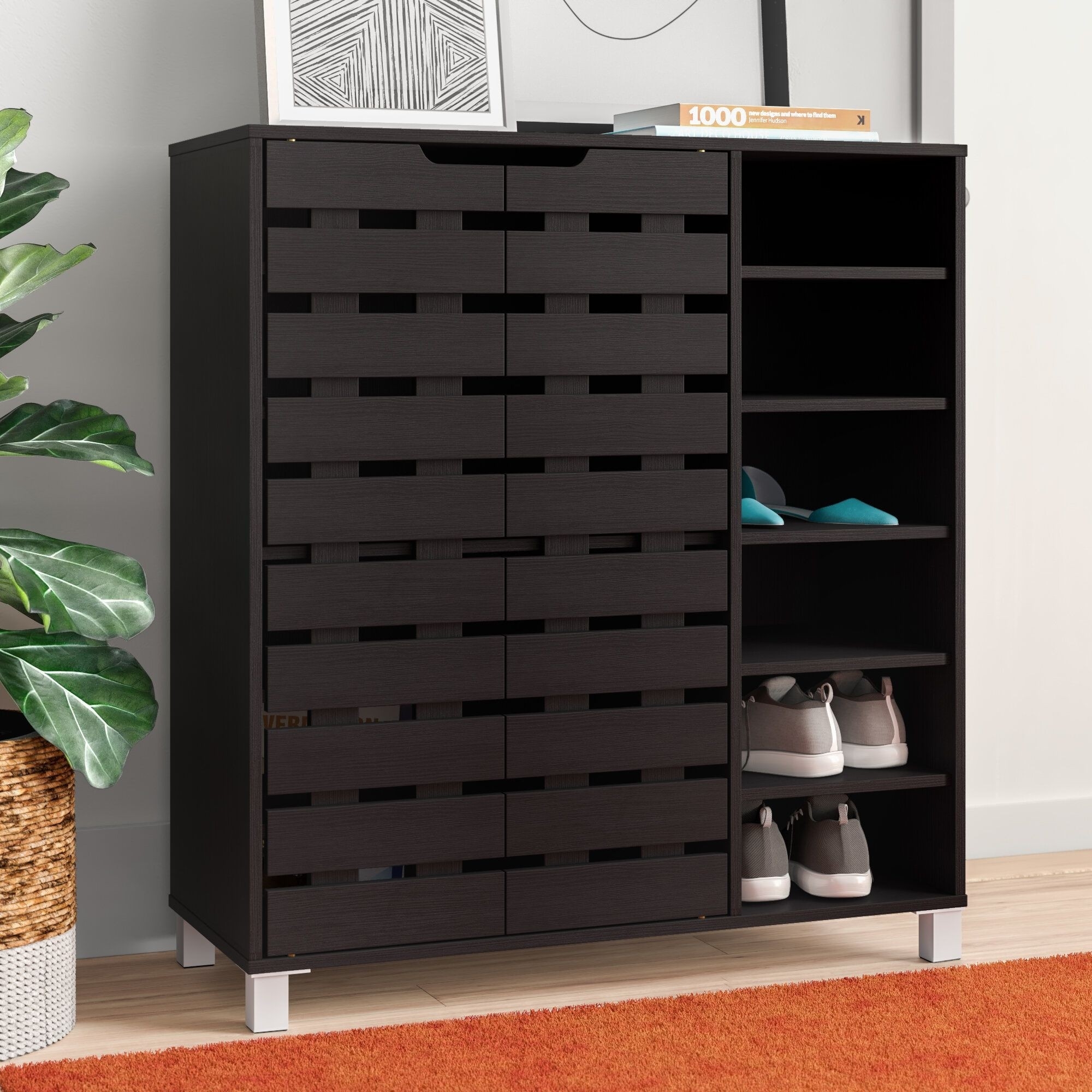Types of Entryway Shoe Cabinets with Doors

The entryway shoe cabinet, a seemingly simple piece of furniture, offers a surprising array of styles, materials, and functionalities. Choosing the right one depends on factors ranging from available space and personal aesthetic preferences to budget constraints and desired storage capacity. This overview explores the diverse options available to discerning homeowners.
Entryway Shoe Cabinet Styles, Entryway shoe cabinet with doors
Entryway shoe cabinets are available in a wide variety of styles to complement any home décor. Traditional designs often feature ornate carvings, dark wood finishes, and classic silhouettes. These cabinets evoke a sense of timeless elegance and often incorporate multiple drawers or compartments for added storage. In contrast, modern styles emphasize clean lines, minimalist aesthetics, and the use of contemporary materials like lacquered wood or metal. Minimalist cabinets prioritize functionality and space-saving design, often featuring sleek, handleless doors. Rustic designs, on the other hand, utilize natural wood with visible grain and knots, often incorporating metal accents for a touch of industrial chic. These styles often feature a more rugged and less refined appearance.
Door Styles and Their Advantages and Disadvantages
The choice of door style significantly impacts both the functionality and aesthetics of the shoe cabinet. Hinged doors, the most common type, swing open to reveal the interior. They offer straightforward access but require sufficient clearance space to open fully. A classic example would be a traditional wooden cabinet with two hinged doors. Sliding doors, which slide along tracks, are ideal for space-saving solutions. They are particularly beneficial in narrow hallways or entryways. Imagine a sleek, modern cabinet with two sliding glass doors, showcasing the neatly organized shoes within. Bi-fold doors, which fold in half, provide a compromise between hinged and sliding doors, requiring less space than hinged doors but offering easier access than sliding doors. A good example is a compact cabinet with bi-fold doors made of painted MDF, suitable for smaller spaces.
Comparison of Entryway Shoe Cabinet Styles
The following table compares four distinct entryway shoe cabinet styles, highlighting their typical price ranges, materials, and storage capacities. Price ranges are estimates and can vary significantly based on brand, retailer, and specific features. Storage capacity is expressed as an approximate number of pairs of adult shoes.
| Style | Typical Price Range (USD) | Typical Materials | Approximate Storage Capacity (Pairs of Shoes) |
|---|---|---|---|
| Traditional | $200 – $800 | Solid wood (oak, cherry, mahogany), veneers | 10-20 |
| Modern | $150 – $600 | MDF, lacquered wood, metal, glass | 8-15 |
| Minimalist | $100 – $400 | MDF, laminate, bamboo | 6-12 |
| Rustic | $250 – $700 | Reclaimed wood, metal, wrought iron | 8-16 |
Functionality and Features of Entryway Shoe Cabinets with Doors: Entryway Shoe Cabinet With Doors

Entryway shoe cabinets with doors offer a blend of practicality and aesthetics, transforming a typically cluttered space into an organized and visually appealing area. The functionality of these cabinets is significantly enhanced by a range of features designed to maximize storage and maintain a tidy entryway. Careful consideration of these features is crucial for selecting a cabinet that meets individual household needs.
Entryway shoe cabinet with doors – Beyond simple storage, effective shoe cabinets incorporate design elements that improve usability and longevity. Features such as adjustable shelves, ventilation systems, and cleverly concealed compartments contribute to a more functional and user-friendly experience. The capacity of the cabinet, directly related to household size and the types of shoes stored, is another key factor influencing overall functionality. Proper organization methods can further optimize space and accessibility.
Storage Capacity and Organization Methods
The optimal storage capacity of an entryway shoe cabinet is directly proportional to the number of household members and the variety of footwear owned. A family of four with a penchant for athletic shoes, boots, and dress shoes will require significantly more storage than a single person with a minimalist wardrobe. Understanding these needs is crucial for selecting the appropriate cabinet size and configuration.
Effective organization methods are key to maximizing storage space and maintaining a tidy cabinet. For instance, using shoe dividers to separate individual pairs prevents toppling and maintains order. Vertical storage, often achieved with adjustable shelves, allows for the efficient stacking of shoes, while designated compartments for different shoe types (e.g., boots, heels, sneakers) streamline retrieval. Consider using clear bins for seasonal footwear to maintain a clean look and improve accessibility. For example, a family might dedicate one shelf to everyday shoes, another to seasonal boots, and a third to formal footwear.
Design of a Multi-Functional Shoe Cabinet
The following design incorporates three unique features to enhance organization and functionality:
- Adjustable Height Shelves with Dividers: This allows for customization based on the height and type of footwear, maximizing vertical space and preventing shoes from tumbling. The addition of dividers further enhances organization by separating individual pairs.
- Integrated Bench Seating with Hidden Storage: A built-in bench provides a convenient place to sit while putting on or taking off shoes. Hidden storage beneath the bench can be utilized for shoe polish, shoe horns, or other small items, maximizing space utilization.
- Ventilation System with Perforated Doors: The cabinet doors incorporate strategically placed perforations to ensure proper ventilation, preventing the buildup of moisture and odors, thus prolonging the life of stored footwear. This feature is especially important in humid climates.
